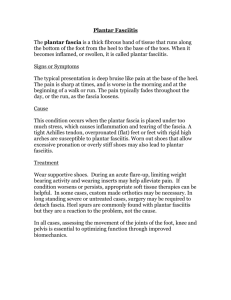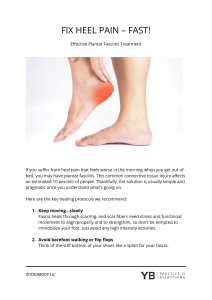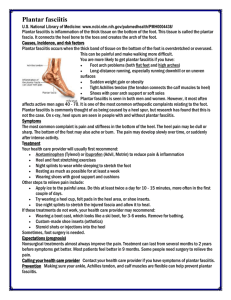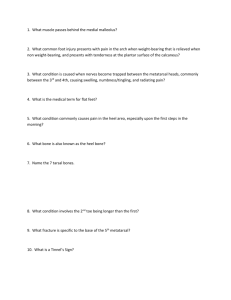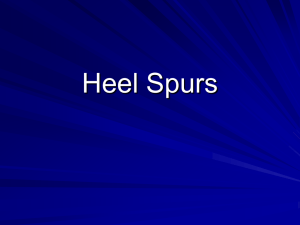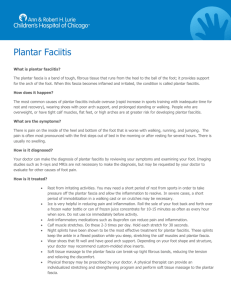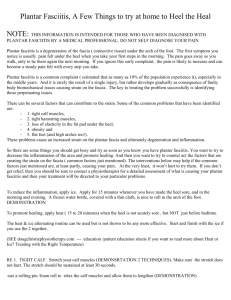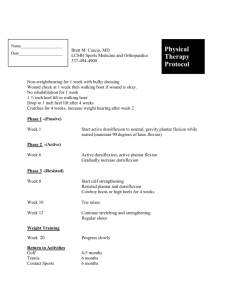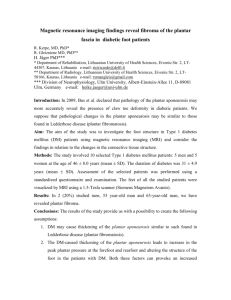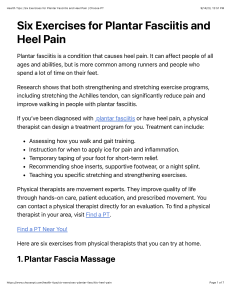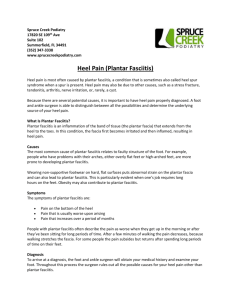Heel pain
advertisement
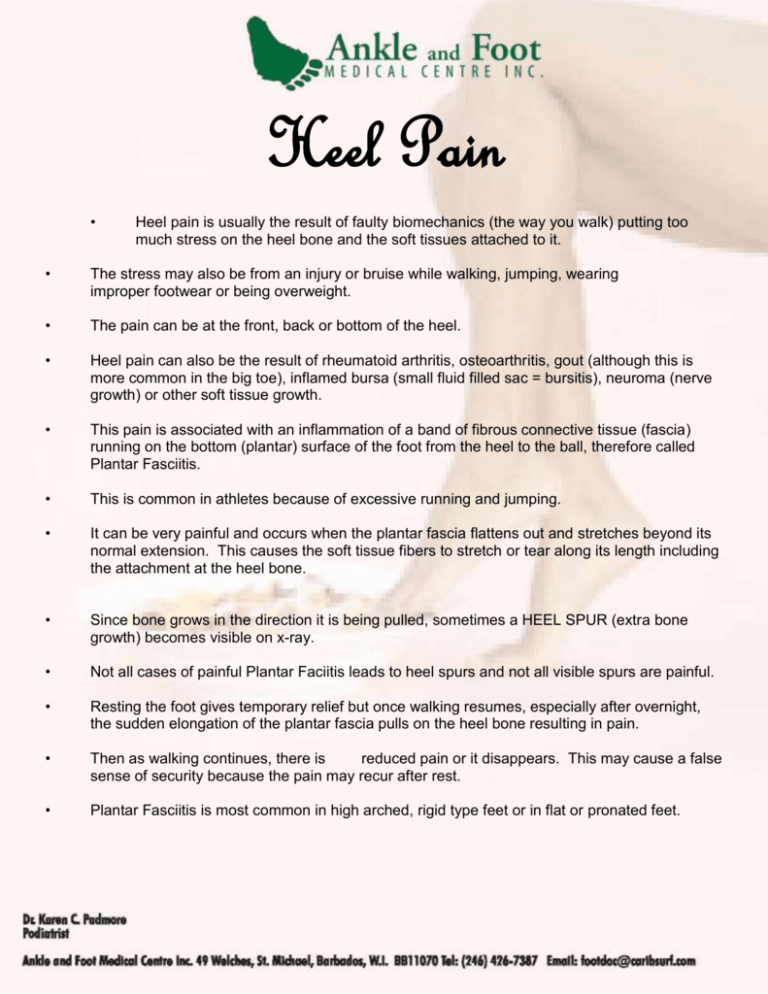
Heel Pain • Heel pain is usually the result of faulty biomechanics (the way you walk) putting too much stress on the heel bone and the soft tissues attached to it. • The stress may also be from an injury or bruise while walking, jumping, wearing improper footwear or being overweight. • The pain can be at the front, back or bottom of the heel. • Heel pain can also be the result of rheumatoid arthritis, osteoarthritis, gout (although this is more common in the big toe), inflamed bursa (small fluid filled sac = bursitis), neuroma (nerve growth) or other soft tissue growth. • This pain is associated with an inflammation of a band of fibrous connective tissue (fascia) running on the bottom (plantar) surface of the foot from the heel to the ball, therefore called Plantar Fasciitis. • This is common in athletes because of excessive running and jumping. • It can be very painful and occurs when the plantar fascia flattens out and stretches beyond its normal extension. This causes the soft tissue fibers to stretch or tear along its length including the attachment at the heel bone. • Since bone grows in the direction it is being pulled, sometimes a HEEL SPUR (extra bone growth) becomes visible on x-ray. • Not all cases of painful Plantar Faciitis leads to heel spurs and not all visible spurs are painful. • Resting the foot gives temporary relief but once walking resumes, especially after overnight, the sudden elongation of the plantar fascia pulls on the heel bone resulting in pain. • Then as walking continues, there is reduced pain or it disappears. This may cause a false sense of security because the pain may recur after rest. • Plantar Fasciitis is most common in high arched, rigid type feet or in flat or pronated feet. • The high arch foot has a tight band like plantar fascia and is rigid during walking. • In the pronated foot, the plantar fascia is stretched due to excessive motion. • Other causes are:- - Improper shoes – especially with poor arch support - stiff soled shoes cause over stretching of the plantar fascia - over-worn shoes allows increased pronation - the most common cause of Plantar Fasciitis is a sudden increase in amount or intensity of activity in a short time.e.g.the “weekend warrior” TREATMENT • Rest • Foot exercises, physical therapy • Orthotics (in shoe devices to give arch support) • Appropriate shoes • Corticosteroid injections • Medication. eg.nonsteroidal anti-inflammatories (NSAIDS)
